Lubomir Kavalek
The Huffington Post, March 25, 2011Aronian Wins the Last Amber Chess Tourney

Levon Aronian won the Amber tournament in Monaco this month. He will be known as the last winner. After twenty years, the combined blindfold and rapid chess event, featuring the world's top players, comes to a halt.
Named after his daughter Melody Amber, the Dutch sponsor Joop van Oosterom, created a dream tournament for the world's best grandmasters, allowing them to have fun and be well paid for it. This year's prize fund was 227,000 euro (aprox. US $317,000). Last year's co-winner, Vassily Ivanchuk, went as far as calling it " the greatest tournament."
It was a perfect chess event to watch: a nice mixture of different creative efforts from brilliant and funny opening ideas to remarkable endgame escapes. It was an event where blunders were not only permitted, but encouraged. And seeing that, it convinced us that the world's top players are human after all. The players took risks because the games were not rated, although the organizers listed the players according to ratings.
The world champion Vishy Anand of India led the field of 12 world-class grandmasters this year. He won the event five times before and came to Monaco with the best FIDE rating of 2817.
Magnus Carlsen held the top rating spot for 12 of the last 14 months, but now was second with 2815 rating. The Norwegian phenom made it clear what he intended to do in Monte Carlo. "I really, really want to win and restore the power balance," he told T.D. Max in a revealing article "The Prince's Gambit," which appeared in The New Yorker when the Amber tournament was already on the way.
In the end, the victory went to Aronian. The Armenian grandmaster was third on the FIDE list with rating of 2808, but he was able to reverse the order. In a combined score, he amassed 15,5 points in 22 games, a full point ahead of Carlsen. Anand finished third with 13 points. It was Aronian's third victory at the Amber. He also won in 2008 and 2009.
A great tactician with unusual ideas and wacky moves, Aronian is very resourceful, defending bad positions tooth and nail and often turning them around. He gives the impression he is lucky, but most tournament winners are. Some say he can see around the corner and it was not surprising he dominated the blindfold event, scoring 8,5 in 11 games. Anand took second place with 7 points.
Carlsen had a phenomenal result in the rapid play: 9,5 points in 11 games. His closest rival, Aronian, had 7 points. But the Norwegian grandmaster scored under 50 percent in blindfold games. His biggest setback came on the fifth playing day when he lost both games to Vassily Ivanchuk with whom he shared the victory last year.
Former world champion Vladimir Kramnik won the Amber event six times, but had the worst result this year. He finished next to last.
Monaco Grand Prix
It has nothing to do with fast cars and checkered flags, but with an opening system Carlsen brought to Monaco. Called the Grand Prix Attack, it was very popular on the British open tournament circuit. It is a lazy player approach to fighting the Sicilian defense. No long theoretical conversations, but a simple and clear strategy often ending with a kingside attack. It can lead to early knockouts as in Carlson's victory against Veselin Topalov, shown below.
The experienced Anand had the benefit of seeing the game and prepared a variation in which black could create a triple-pawn formation in white's camp. One of the wittiest chess commentators, Hans Kmoch, called these triplets "positional monsters." Anand was pleasantly surprised when Carlsen played right into it. The Indian grandmaster even declared that white was busted after mere 10 moves. It is our game within the game.
Carlsen - Topalov
Sicilian defense: Grand Prix Attack
Amber Rapid, Monaco 2011
1.e4 c5 2.Nc3 (Carlsen does not intend to play the pure Closed Sicilian. The knight move allows him to switch to the Grand Prix Attack, an annoying way to counter the Najdorf Sicilian.)
2...d6 (After the usual 2...Nc6 white can play 3.Nf3 preparing to open the game with d2-d4, throwing the Najdorf players off the track.) 3.f4 (The Grand Prix Attack.) 3...Nc6 (In the blindfold game Carlsen-Anand, the Indian grandmaster was prepared and left his knight home for a few moves: 3...g6 4.Nf3 Bg7 5.Bb5+ Bd7 6.Bc4 The last two moves allow white to control the breaks in the center with the d-pawn. 6...Nc6 7.0-0 Na5 8.d3 Nxc4! 9.dxc4 Bxc3! 10.bxc3 Bc6 and black solved all problems. As a matter of fact, Anand thought that white is positionally busted.
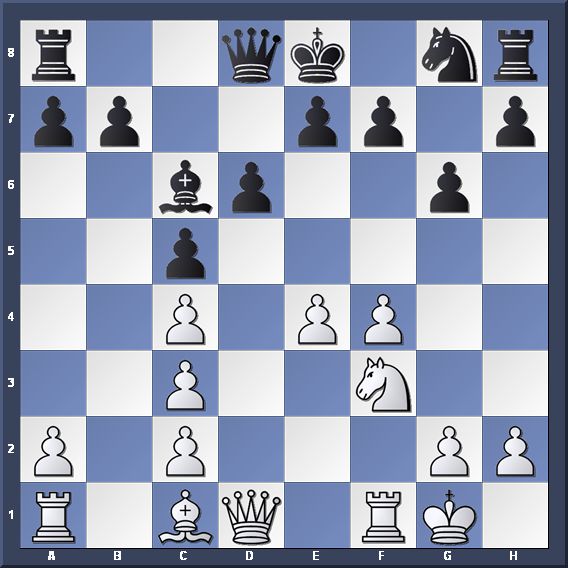
Here is the rest of the game: 11.e5 Qc7 12.Qd3 f5 13.Ng5 h6 14.Qh3 dxe5 15.Be3 e4 16.Ne6 Qc8 17.Nxc5 Nf6 18.Bd4 Kf7 19.Rae1 a5 20.Re2 b5 21.Nb3 bxc4 22.Nd2 Bd5 23.Rfe1 Qd8 24.Qh4 e6 25.Rb1 Qe7? [25...Nh5! 26.Qf2 Re8 with black's advantage.] 26.Nxc4 Nd7 27.Qxe7+ Kxe7 28.Ne3 Rhb8 29.Rxb8 Rxb8 30.c4 Bc6 31.Rd2 e5 32.Bxe5 Nxe5 33.fxe5 f4 34.Nd5+ Bxd5 35.Rxd5 Rb1+ 36.Kf2
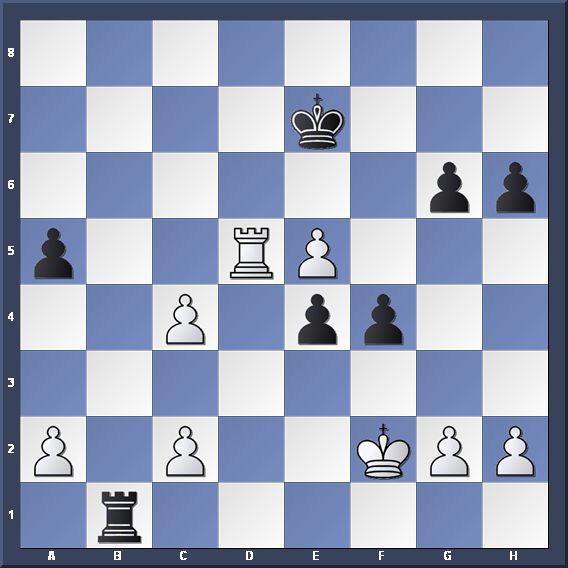
36...Rb2? [36...e3+! 37.Ke2 Rg1 wins easily for black.] 37.Rd4 Rxc2+ 38.Kf1 f3 39.gxf3 exf3 40.Rd6 g5 41.Rxh6 Rxa2 42.h3 a4 43.Rf6? [After 43.c5 a3 44.Ra6 Ra1+ 45.Kf2 a2 46.c6 Rh1 47.c7 Kd7
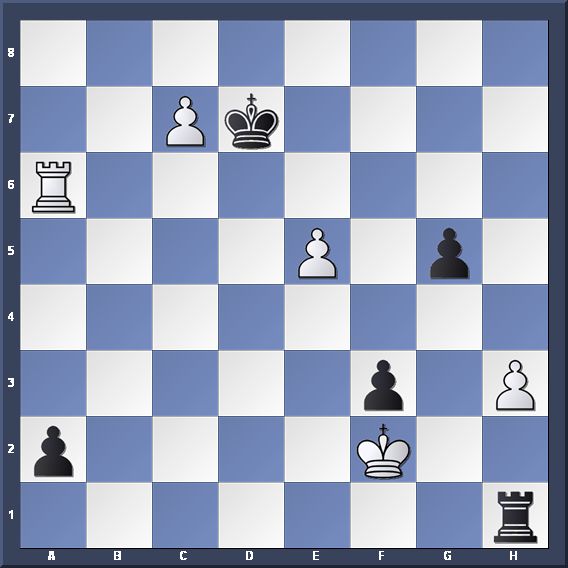
48.Ra7!, threatening 49.e6+, black has to take a draw, since 48...a1Q 49.e6+ Kc8 50.Rxa1 Rxa1 51.e7 wins for white.] 43...Ra1+ 44.Kf2 a3 45.Ra6 a2 , followed by 46...Rh1 47.Rxa2 Rh2+ wins. 0-1 Carlsen,M (2815)-Anand,V (2817)/Monaco 2011.)
4.Nf3 g6 5.Bb5 (The more central bishop development 5.Bc4 is twice as much popular, but Carlsen's choice should not be underestimated.) 5...Bd7 6.0-0 a6 7.Bxc6 Bxc6 8.d3 Bg7 9.Qe1 Qd7 10.a4!? (Threatening to fix the black queenside with 11.a5. It comes from the creative mind of GM Ljubomir Ljubojevic who played it 20 years ago with mixed results against Garry Kasparov and Lajos Portisch.) 10...f5? (An outright positional blunder, weakening the square e6 and inviting the white cavalry to charge. 10...b6 stops white's intention. It was chosen overwhelmingly by other players, including Kasparov.)

11.Nd5! (The knight leaps forward at the right time, disrupting black's development and causing a havoc.) 11...fxe4 (After 11...Bxd5 12.exd5 Nf6 13.c4 0-0 14.Ng5 the knight is going to land on e6.) 12.dxe4 (Not 12.Nb6? Qd8 13.Nxa8 exf3 and black wins.) 12...Rb8 (Black could have saved time 12...Bxd5 13.exd5 Nf6 [13...Qf5 14.c4 Qd3 15.Qe6 Qxc4 is dangerous for black, for example 16.Re1 Rd8 17.Ng5 Qd4+ 18.Kh1 Qf6 19.Qe2 Nh6 20.g4 and white has too many threats.] 14.c4 0-0 and black can still play.)
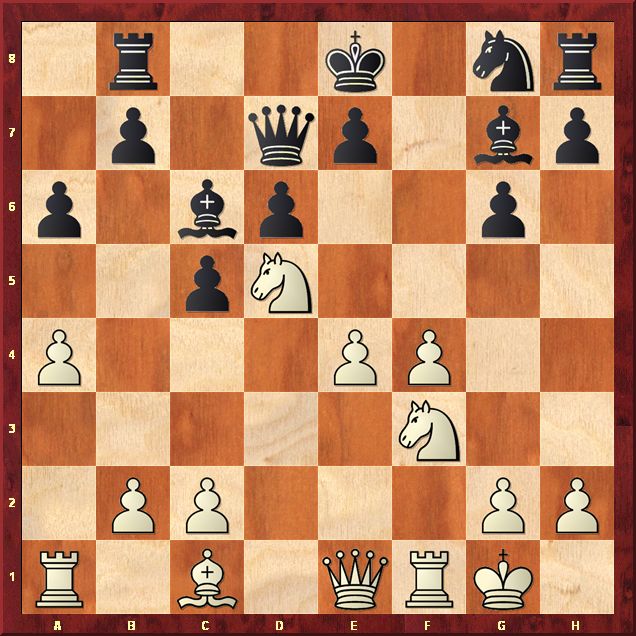
13.Ng5! (Threatening to invade black's position with 14.Ne6, since 14...Qxe6? allows 15.Nc7+ winning the queen. Deep Fritz 12, a computer engine, prefers 13.Nb6 for example 13...Qd8 14.a5 Nf6 15.Ng5 Bd7 16.e5 and white wins; or 13...Qg4 14.Ra3 Nf6 15.Ng5 looks dangerous for black.) 13...Bxd5 14.exd5 Qf5 15.Ne6 (Carlsen jumps in, indirectly protecting the d-pawn [15...Qxd5? 16.Nc7+ wins]. He could have covered the light squares with 15.Qd1 Nf6 16.Ne6 Kf7 17.c4.) 15...Bf6 (Topalov discards the daring 15...Bd4+ , for example 16.Be3 [16.Kh1 Qxc2] 16...Bxb2 17.Rb1 Bf6 18.Qd2 with white's edge.) 16.Qe2 (Threatening to win with 17.g4.) 16...h5 (After 16...Nh6 comes 17.h3.)
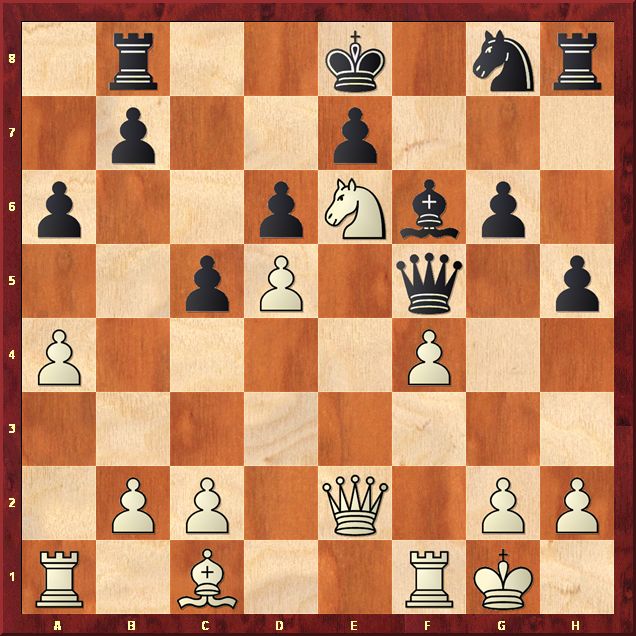
17.Ra3! (Carlsen turns the forgotten piece into a monster, going after the black queen.) 17...Nh6 18.Rg3 (Threatening 19.Rg5. 18.Rd3 is not bad either.) 18...Kd7 19.Rg5!? (Carlsen executes his threat, perhaps noticing that 19.c4 gives the black queen a surprising escaping square on b1. Joking aside, white could have cemented his advantage with 19.Rd3.) 19...Bxg5 20.fxg5 Qxd5 (After 20...Qg4 21.Qd2 Nf5 22.Rf4 wins.) 21.Nf4 Qd4+ 22.Be3 Qe4 (After 22...Qxa4 23.gxh6 Rxh6 24.Nd5 wins.) 23.gxh6
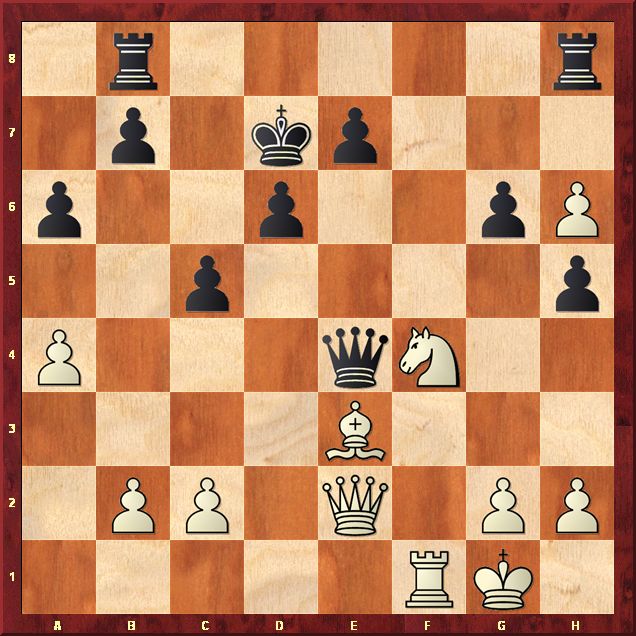
23...Rxh6? (23...Rbf8! would make it more difficult for Carlsen, for example:
a) 24.Re1!? Rxf4 25.Bxf4 Qxf4 26.Qxe7+ Kc6 27.h7 looks optically great for white, but black can still fight either after 27...g5 28.Rf1 Qxa4 29.Qg7 Qd4+ 30.Qxd4 cxd4 31.Re7 b5 32.Kf2 a5; or after 27...Qd4+ 28.Kh1 g5 29.Rf1 Qxa4 30.h3 Qxc2 31.Rf7 b6, although here 32.Qd7+ Kd5 33.Rf6 seems to do the trick for white.
b) 24.Qd2?! g5 25.Nd3 Rxf1+ 26.Kxf1 Qf5+ 27.Kg1 c4 28.Ne1 Rxh6²;
c) 24.Qf3! the best choice 24...Qxf3 25.gxf3 Rfg8 26.Nd5 g5 27.h4 gxh4+ 28.Kh2 and white still keeps winning chances because of his strong h- pawn.)
24.Nd5 Rhh8 25.Qd2 Rhf8 26.Re1! (Threatening to win with the discovered attack 27.Bxc5.)
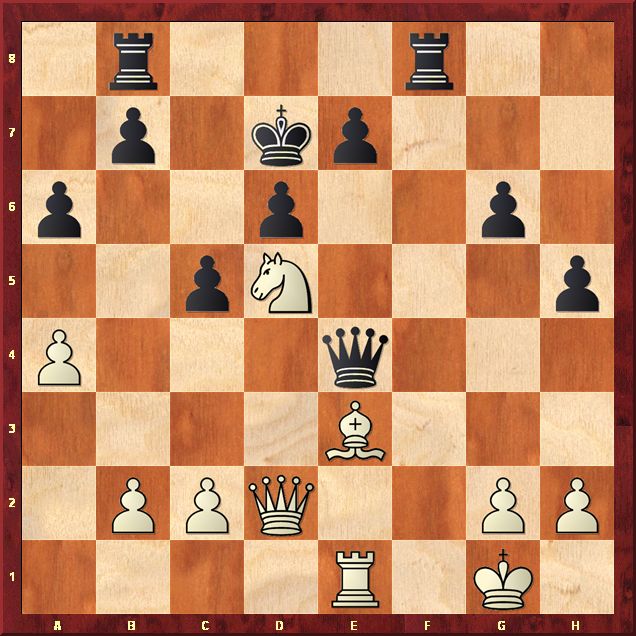
26...Rf5 (Black had no defense. White wins either after 26...Qf5 27.Bxc5; or after 26...Kc6 27.c4! Qxc4 28.Nxe7+ Kc7 29.Rd1 Rbd8 30.Bg5 Rd7 31.Nd5+ Kc6 32.Nf6.) 27.Nb6+ Kc6 28.Bxc5 Rbf8 29.Bd4! (Avoiding 29.Rxe4?? Rf1 mate, Carlsen threatens he black queen and to win with 30.Qc3+.) Black resigned.
Note that in the replay windows below you can click either on the arrows under the diagram or on the notation to follow the game.
Photo John Nunn at Chessbase
No comments:
Post a Comment